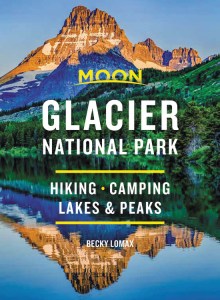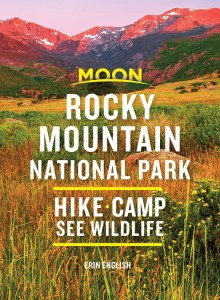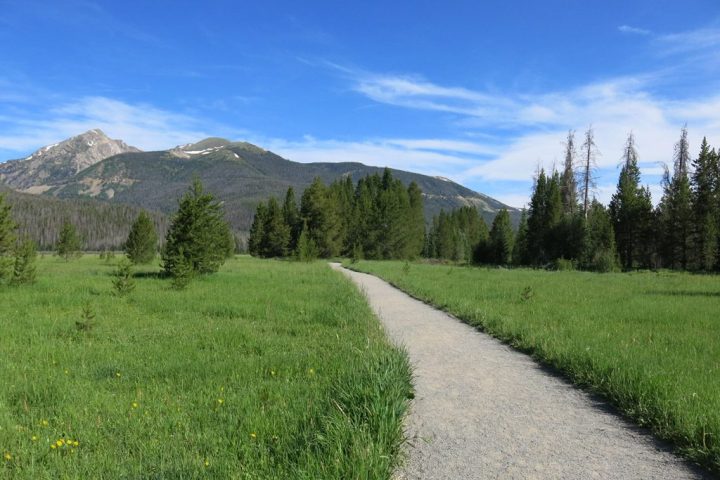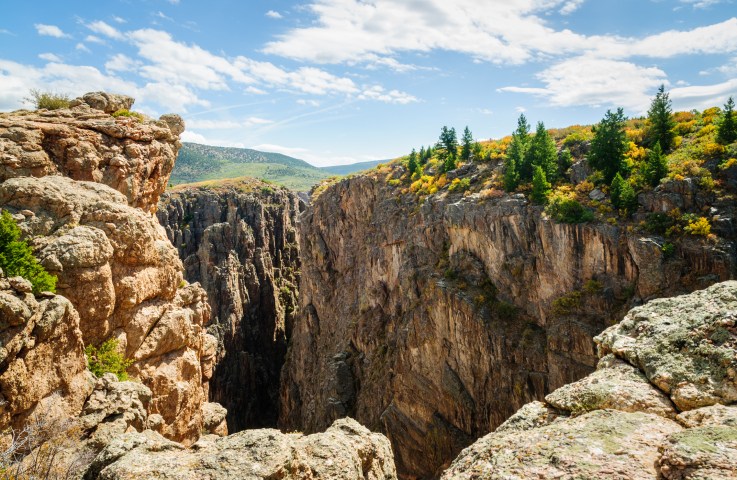Accessibility in National Parks
National parks are for everyone—and that includes travelers with disabilities. However, when planning a national parks adventure it’s good to keep in mind that some parks are more accessible than others. While plenty of national park structures have been refitted with ramps and wider doors, many historic or remote structures remain inaccessible.
Many hiking trails are accessible to wheelchairs and most campgrounds designate specific campsites that meet the Americans with Disabilities Act standards. If you or someone in your family is disabled, there are many resources to help you plan your trip. Check on the specific park’s website for services pertinent to that park. Many parks have facilities, programs, and trails designed for those with physical or mobility challenges.
Blind and other permanently disabled U.S. citizens and permanent residents can get a free lifetime National Parks and Federal Recreational Lands Access Pass. The pass admits the pass holder plus three other adults in the same vehicle; children under age 16 are free. Pass holders also get 50 percent discounts on federally run tours and campgrounds. Passes are available in person at most entrance stations (proof of medical disability or eligibility for receiving federal benefits is required).
For travelers who are vision- or hearing-impaired:
Most park brochures are also available in large print or braille. With enough notice, some parks can provide services for those with hearing impairments, and park videos often have captioned versions. Trained service dogs are permitted in many parks, but check on requirements; some parks with prevalent grizzly bear populations discourage them in the backcountry.
Zion, Bryce, and Other Utah Parks

What to Know:
Travelers with disabilities will find Utah progressive when it comes to accessibility. All of the parks, except the former Grand Staircase-Escalante National Monument, have all-abilities trails and services. All five national parks have reasonably good facilities for visitors with limited mobility. Visitors centers are all accessible, and at least a couple of trails in each park are paved or smooth enough for wheelchair users to navigate with some assistance. Each park has a few accessible campsites.
Zion’s hiking trails are tailored to all abilities, making it easy to explore. Both the Pa’rus Trail and Riverside Walk are wheelchair-accessible; the latter passes lush hanging gardens.
Most hotels also offer some form of barrier-free lodging. It’s best to call ahead and inquire what these accommodations are, however, because these services can vary quite a bit from one establishment to another.
Because the Grand Staircase, Kaiparowits Plateau, and Escalante Canyons National Monuments are almost entirely undeveloped, trails are generally inaccessible to wheelchair users.
Temple of Sinawava, Zion National Park
The last shuttle stop is at this canyon, where 2,000-foot-tall (610-m) rock walls reach up from the sides of the Virgin River. There’s not enough room for the road to continue farther up the canyon, but it’s spacious enough for a fine paved wheelchair-accessible walking path. Plants sprout from hanging gardens on the cliffs, and birds nest in some of the holes in the cliff walls.
Pa’rus Trail, Zion National Park
This paved, wheelchair-accessible trail (3.5 miles round-trip) runs from South Campground to the Canyon Junction shuttle-bus stop. For most of its distance, it skirts the Virgin River, and it makes for a nice early-morning or evening stroll. Listen for the trilling song of the canyon wren (easy to hear), then try to spot the small bird in the bushes (not so easy to see). The Pa’rus Trail is the only trail in the park open to bicycles and pets.
Delicate Arch Viewpoint, Arches National Park
Delicate Arch stands in a magnificent setting atop gracefully curving slickrock. Distant canyons and the La Sal Mountains lie beyond. View the astonishing arch from a distance at the Delicate Arch Viewpoint. A short wheelchair-accessible path leads about 100 yards from the parking area to a decent view of the arch.
Yellowstone and Grand Teton National Parks

What to Know:
Yellowstone and Grand Teton National Parks offer accessibility brochures at visitors centers and online. Both parks have TDD (Yellowstone 307/344-2386, Grand Teton 307/739-3301) and ADA facilities, although they are not ubiquitous. All lodging facilities have a few rooms or cabins that are accessible. Inquire about these through the individual concessionaires that run the lodging properties. Most campgrounds have a few wheelchair-accessible sites and restrooms. These are listed in the accessibility brochures for both parks.
Yellowstone and Grand Teton have some paved and hard-surface trails that are wheelchair-accessible. While some of the boardwalk trails at the geothermal areas in Yellowstone are wheelchair-accessible, many of the boardwalks have steps at some point. All accessible trails are listed in the accessibility brochures. Both parks also offer some interpretive activities that are accessible. Locate these in the seasonal park newspapers.
For blind or vision-impaired travelers:
While pet dogs are not permitted on backcountry trails, service dogs are allowed, although due to bears, they are discouraged. With service dogs, be safe by sticking to well-traveled trails during midday.
Upper Geyser Basin, Yellowstone National Park
The Upper Geyser Basin is the most popular hydrothermal basin, drawing thousands of visitors each day in summer but few in winter. It contains a maze of 4 mi (6.4 km) of boardwalk, dirt, and paved interpretive loops through the largest concentration of geysers in the world. Walkers, bikers, and wheelchairs share the paved portion; in winter, the snow-covered pavement is groomed for cross-country skiing. Often, herds of buffalo or elk feed in the meadows in between geothermal features. Signs at trail junctions have maps to assist with route-finding. Pick up the interpretative Old Faithful Trail Guide ($1) at the visitors center.
North Rim, Grand Canyon of the Yellowstone
The one-way North Rim Drive (east side of Lower Grand Loop Rd., 1.2 mi/1.9 km south of Canyon Junction) visits four signed overlooks of the canyon, Yellowstone River, and the 308-ft Lower Falls. While the Lower Falls is not visible, the four newly rebuilt Inspiration Point rock-and-steel walkway platforms (three are wheelchair-accessible) offer spiraling views of the canyon and river.
Jenny Lake, Grand Teton National Park
The $19 million Jenny Lake Renewal Project added three lake overlooks, trail signage, interpretive panels, benches for resting, and wide pavement to this scenic wheelchair-accessible trail (also called Discovery Trail). To see the lake backed by the Tetons, take the 0.5-mi (0.8-km) paved, wheelchair-accessible Jenny Lake Overlook path from the plaza outside the visitors center. It goes to three boulder-rimmed overlooks with seating to absorb views, and several stairways descend to a beach for wading or swimming. The trail also goes to the boat dock for tours, shuttles, and paddling rentals, and to the north a dirt path continues to Jenny Lake Overlook on North Jenny Lake Drive.
Yosemite, Sequoia, and Kings Canyon National Parks
What to Know:
A free brochure on accessibility for wheelchair users and other visitors with limited mobility is available by contacting the park, or by download. Wheelchair rentals are available at the Yosemite Medical Clinic (9000 Ahwahnee Dr., Yosemite Valley, 209/372-4637) and at the Yosemite Valley Lodge bike rental kiosk (209/372-1208).
A sign language interpreter is available in the park in the summer months. To request in advance that the interpreter is available at a certain park event or activity, contact the rangers in any visitors center. All requests are filled on a first-come, first-served basis. Park orientation videos and slide shows in the Valley Visitor Center are captioned.
Tactile exhibits are found at the Valley Visitor Center, Happy Isles Art and Nature Center, and Mariposa Grove Museum.
Cars with disabled person placards are allowed access on the Happy Isles Loop and paved road to Mirror Lake (east of Half Dome Village). Disabled visitors who don’t have a placard may obtain a temporary one from park visitors centers.
Spring through fall, people with disabilities who are unable to board the Mariposa Grove Tram may drive behind the tram and listen to an audio tour of the grove.
View the Valley from Glacier Point
A drive or shuttle bus along Glacier Point Road (open June-Oct.) leads to a short, paved, wheelchair-accessible path with epic vistas across the entire valley and the High Sierra.
Lower Yosemite Fall
Get soaked to the skin by North America’s tallest freefalling waterfall. As Yosemite Falls roars with snowmelt from March to June, its icy spray drenches and delights onlookers who follow the easy, 1-mile (1.6-km), wheelchair-accessible trail to its base. This crowd-pleasing experience is a must-do in the spring, but it’s also amazing on winter mornings, when Yosemite Falls’ lower drop is framed by a crystallized “ice cone”—but it only lasts until the sun rises high enough to melt it.
Mariposa Grove

The Mariposa Grove reopened in June 2018 after being closed three years for restoration. The massive project improved habitat for the sequoias by removing parking lots and roads and restoring the natural flow of water to the giant trees. A raised boardwalk trail now travels through the lower grove, minimizing visitor impact on the sequoias’ fragile roots and providing better access for wheelchairs.
Sequoia & Kings Canyon
Start your exploration at the Giant Forest Museum (559/565-4480, 9am-6pm daily in summer, shorter hours in winter), housed in a renovated 1928 building designed by architect Gilbert Stanley Underwood. (Underwood was famous for designing Yosemite’s Ahwahnee Hotel.) Several paths are suitable for wheelchairs, including the Big Trees Trail (less than 1 mile) and the 0.5-mile (0.8-km) General Sherman Tree Trail. From the General Sherman Tree Trailhead, the wheelchair-accessible Congress Trail (2 mi. rt., 1 hr., easy) passes many of the park’s most famous giant sequoias—Chief Sequoyah, General Lee, and President McKinley—as well as the House and Senate Groups.
The wheelchair-accessible Roaring River Falls Trail (0.5 mi. rt.) travels under a cool canopy of trees to rushing water squeezed through rock slots. This is the only waterfall in Sequoia and Kings Canyon that is at least partially accessible via wheelchair (one section may be too steep for some wheelchair users). It’s an easy journey to Roaring River Falls, a pretty waterfall that drops through a narrow gorge into the South Fork Kings River. What’s extraordinary about the waterfall is not the cascade itself, but the giant rocky pool into which it falls—it’s at least 50 feet (15 m) wide.
Glacier National Park
What to Know:
Visitors with accessibility needs should pick up an Accessible Facilities and Services brochure to see a list of services and accessible facilities. Get these at visitors centers and online. The Disabled Traveler’s Companion gives comprehensive information for traveling in Glacier. Call 406/888-7806 for information by TDD. Special programs and sign-language interpretation may be available with two weeks’ notice; call 406/888-7930 to set it up.
Five campgrounds in Glacier reserve 1-2 sites each for wheelchair needs: Apgar, Fish Creek, Rising Sun, Sprague Creek, and Two Medicine. Picnic areas at Apgar, Rising Sun, and Sun Point also have wheelchair access, as do all lodges within the park boundaries, although they have a limited number of guest rooms that conform to Americans with Disabilities Act Accessibility Guidelines.
Other wheelchair-accessible sites include boat docks at Lake McDonald, Many Glacier, and Two Medicine as well as evening naturalist programs in Apgar Amphitheater, Lake McDonald Lodge Auditorium, Many Glacier Hotel Auditorium, Rising Sun Campground, and Two Medicine Campground. Most parking lots offer designated parking.
In Glacier, the Apgar Bike Trail, Trail of the Cedars at Avalanche, Running Eagle Falls Nature Trail in Two Medicine, Goat Lick Overlook, Oberlin Bend Trail, the International Peace Park Pavilion at Goat Haunt, and the Many Glacier Trail from the picnic area are wheelchair-accessible, although some surfaces are rough in places.
In Waterton, Linnet Lake Trail, Waterton Townsite Trail, and Cameron Lake Day Use Area are wheelchair-accessible.
For blind or vision-impaired travelers:
While pet dogs are not permitted on Glacier’s backcountry trails, service dogs are allowed. But due to bears, they are discouraged. With service dogs, be safe by sticking to well-traveled trails during midday.
Accessibility in Other National Parks
Kenai Fjords, Alaska
The Exit Glacier Trail (1-2 mi rt., 1 hr.) offers a series of gentle loops on a broad, mostly level trail. A wheelchair-accessible portion of the trail leads 0.5 mile to Glacier View Overlook, where you can peer across the gravel outwash plain at the ice.
Katmai, Alaska
Katmai has less than five miles of maintained trails. From Brooks Camp Visitor Center, a wheelchair-accessible trail leads to Brooks Falls (2.4 mi. rt.), where three viewing platforms provide a way to watch brown bears fishing for sockeye salmon.
Glacier Bay, Alaska
The Forest Trail (0.7 mi. one-way) is a wheelchair-accessible boardwalk trail that leads to two viewing decks overlooking a pond. Past the pond, a dirt trail continues to the campground and the beach before looping back to the starting point. Park rangers lead daily hikes on this trail.
Grand Canyon, Arizona
While the majority of the Grand Canyon’s trails are not wheelchair-friendly, there are several accessible viewpoints, including Mather Point on the popular (and mostly paved) South Rim Trail and Grandview Point on Desert View Drive.
Death Valley, California
A weathered, wheelchair-accessible boardwalk loop follows the miraculous Salt Creek, winding 0.5 mile toward pale, eroded mud hills through an expanse of pickleweed.
Joshua Tree, California
The Cap Rock Trail (0.4 mi. rt., 20 min., easy) leads through whimsically eroded boulder formations, most notably a flat, cap-like rock balanced on top of a spectacular formation. This wheelchair-accessible trail is wide, flat, and made of hard-packed sandy dirt.
Impressive vistas can be had from the lip of windswept Keys View (Keys View Rd.), a paved, wheelchair-accessible observation point in the Little San Bernardino Mountains. At the top, take in a panorama that stretches to the Salton Sea, Santa Rosa Mountains, San Andreas Fault, Palm Springs, San Jacinto Peak, and San Gorgonio Peak.
Rocky Mountain, Colorado
Located at the toe of the Twin Sisters Peaks, Lily Lake is one of Rocky Mountain’s most accessible alpine lakes. Lying just feet from Highway 7 about six miles south of Estes Park, this turquoise lake is a popular place to picnic and stroll along the shoreline. The 0.8-mile-long, wheelchair-accessible trail is completely flat, making it an excellent outing for families and visitors not yet acclimated to the elevation. Learn more about wheelchair-accessible adventures in Rocky Mountain.
Everglades, Florida
The short Eco Pond Trail (0.5 mi.) is pleasant and wheelchair-accessible. The visitors center also has backcountry permits, available by self-registration in the off-season.
The wheelchair-friendly elevated boardwalk at Pa-hay-okee Overlook (12.5 miles along Main Park Rd.) offers magnificent and expansive vistas onto the grassy infinity of the Everglades. It’s also very popular: In the busy season, there is the distinct possibility of a packed parking lot and cattle-chute movement along the boardwalk. For the most quietude and the best chance of having these beautiful views to yourself, make sure to get here early in the day.
Hawaii Volcanoes, Hawaii
Behind Volcano House, the paved and wheelchair-accessible Earthquake Trail (1 mi rt., 30 min., easy) leads to the Waldron Ledge for superb views of Kīlauea Caldera. The trail is so named due to damage this area incurred during a 6.6-magnitude earthquake.
Great Smoky Mountains National Park, North Carolina and Tennessee
The overwhelming majority of trails in Great Smoky Mountains National Park are not accessible for travelers with disabilities, particularly those that impede mobility. The one exception is the Sugarlands Valley nature trail (on Newfound Gap Rd.). Fortunately, a huge number of attractions, accommodations, and restaurants are accessible. All visitors center restrooms are wheelchair-accessible.
Congaree, South Carolina

Adjacent to the visitors center is a system of elevated boardwalks that loop through old-growth forest. The Boardwalk Loop (2.4 mi., 1.5 hrs.) offers the shortest tour; the flat trail is great for wheelchairs, strollers, and small kids. A well-done self-guided tour brochure explains the fascinating aspects of this unique environment. Along the trail, cypresses tower more than 130 feet into the air. At ground level, hundreds of cypress “knees” (parts of their root system) jut aboveground and you’ll see unbelievably massive loblolly pines.
Badlands, South Dakota
Three scenic trails depart from the Door and Window parking lot. The first 150 yards of the Door Trail (0.75 mi. rt., 30 min., easy) are a wheelchair-accessible boardwalk. At the end, the trail slopes upward and travels through a “door” in the Badlands Wall to great views of the grasslands and the outer wall of the Badlands. The Window Trail (0.25 mi. rt., 20 min., easy) is a wheelchair-accessible boardwalk that leads to a window in the Badlands Wall. Views of the grasslands, an erosion-carved canyon, and spires of the Badlands Wall abound.
Olympic, Washington
Visitors come to the Elwha Valley to see the Elwha River’s transformation. Between Port Angeles and Lake Crescent, follow the Elwha River Road south into the park. Just before reaching the entrance station, a paved, wheelchair-accessible 200-foot path leads to Madison Falls.
On the north side, opposite the visitors center, easy paths let you absorb the beauty. Two wheelchair-accessible paved trails go to Big Meadow (0.5 mi. rt., 20 min.) for mountain views and Cirque Rim (1 mi. rt., 45 min., wheelchair assistance may be needed) overlooking the Strait of Juan de Fuca.
The Olympic Discovery Trail, a shared trail for walkers and cyclists, has a paved 6.5-mile extension that is wheelchair-accessible.
By clicking ‘Sign Up,’ I acknowledge that I have read and agree to Hachette Book Group’s Privacy Policy and Terms of Use



